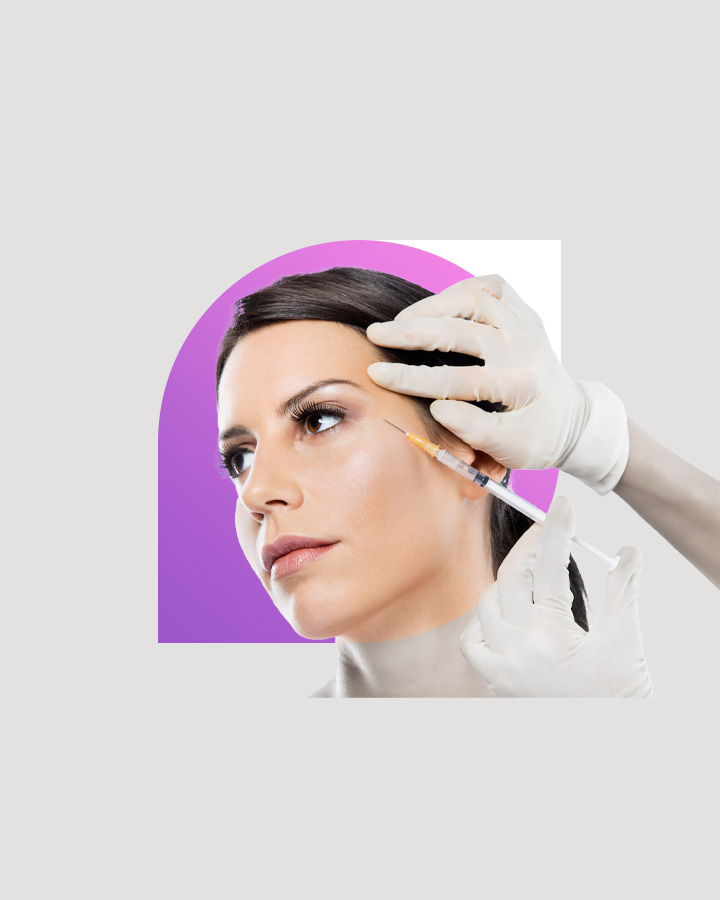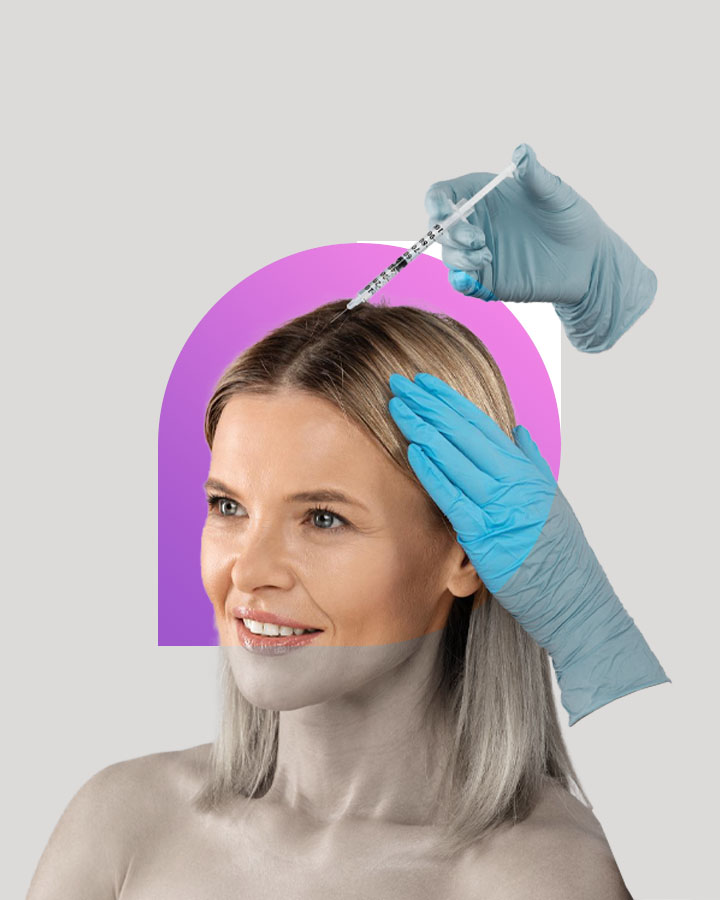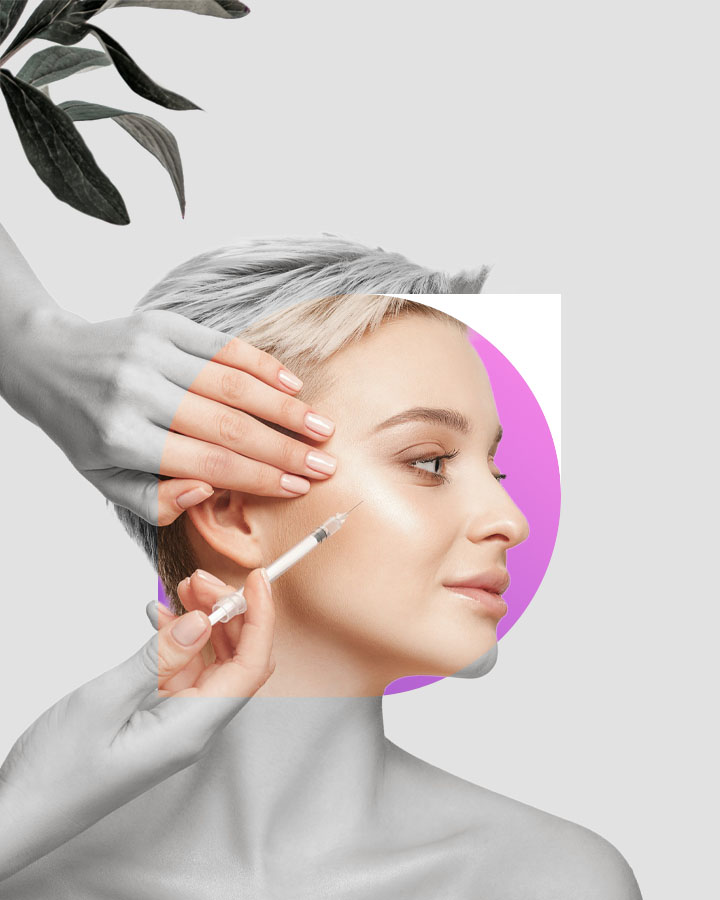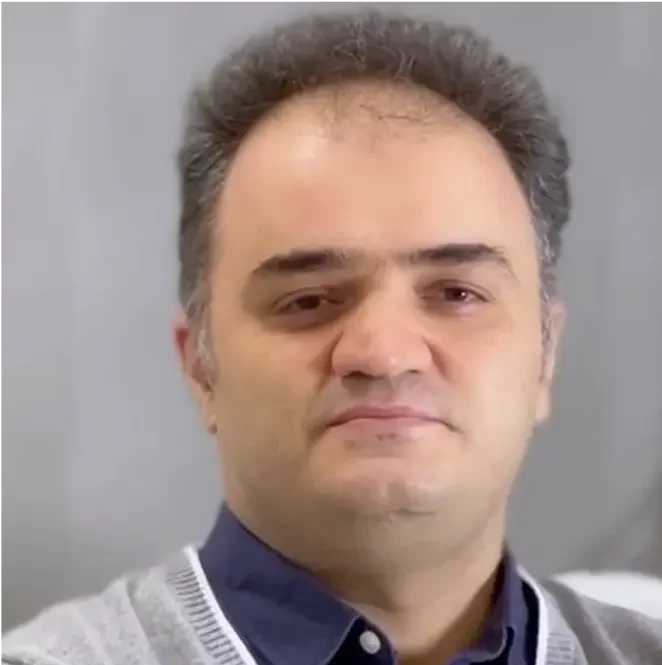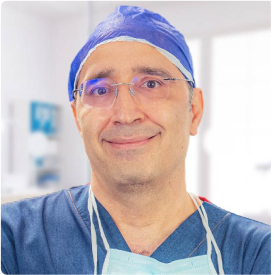None-Surgical Procedures in Iran
We develop customized non-surgical rejuvenation plans based on your unique goals.
Enjoy our artful touch and advanced techniques to restore youthful radiance comfortably and safely.
Experience the Transformation Journey
This candid video follows one patient’s journey to aesthetic perfection through non-surgical treatments. Witness the skill and warmth of renowned providers as they utilize leading techniques to rejuvenate natural beauty comfortably. Discover why more and more travelers choose Iran for affordable, quality, non-surgical care paired with unparalleled hospitality.
Non-Surgical Cosmetic Procedures in Iran:
Many seek non-surgical cosmetic treatments like Botox, fillers, and skin treatments to enhance their beauty without undergoing surgery. Iran offers these services at global quality standards but at a fraction of the cost compared to most countries.
Iranian cosmetic doctors are highly trained in the latest techniques for dermal fillers, neuromodulators, laser skin resurfacing, body contouring, and other non-invasive procedures. Many have certifications from Europe and North America.
Clinics use approved products and devices from reputable brands like Allergan, Galderma, Candela, etc. Standards of hygiene and clinical protocols match those of Western clinics.
Patients can save 50-70% on popular treatments like laser hair removal, Ultherapy skin tightening, CoolSculpting fat reduction, Thermage skin tightening, and dermal fillers.
see more: plastic surgery in iran
Options for non-surgical treatment
Medical Tourism:
The Complete Package
- Free online consultation
- visa assistance
- travel insurance
Invest In High-Quality Care At An Best Price
- Network of the finest hospitals and Clinics
- Doctors and Surgeons
Peace Of Mind From Start To Finish
- Flight booking
- Airport pick-up and drop-off
- Accommodation
- 24/7 support
Cosmetic Surgeons You Can Trust
Provider of high-quality and affordable cosmetic procedures in Iran
What makes us the best choice?
Find the right non-surgical doctors for you
ENT Surgoen
+10 Years of experience
highly skilled and experienced plastic surgeon with a remarkable track record of over 1,000 successful cosmetic surgeries
ENT Surgoen
+10 Years of experience
highly skilled and experienced plastic surgeon with a remarkable track record of over 1,000 successful cosmetic surgeries
Nose surgeon
+18 Years of experiences
Nose operation (rhinoplasty) ear cosmetic surgery chin cosmetic surgery
Nose surgeon
+18 Years of experiences
Nose operation (rhinoplasty) ear cosmetic surgery chin cosmetic surgery
Plastic surgeons
+16 Years of exprience
The member of the Iranian aesthetic plastic surgery societies
Plastic surgeons
+16 Years of exprience
The member of the Iranian aesthetic plastic surgery societies
Plastic surgeons
+14 Years of ecprience
Nose operation (rhinoplasty) ear cosmetic surgery chin cosmetic surgery
Plastic surgeons
+14 Years of ecprience
Nose operation (rhinoplasty) ear cosmetic surgery chin cosmetic surgery
Non-Surgical Procedures in Iran: Results and Benefits
- Rejuvenating a youthful appearance without surgery using injectables, lasers, etc.
- Microdermabrasion and chemical peels improved skin quality.
- Minimal downtime allows a quick return to normal activities.
- Compared to surgical options, they are less expensive and less risky.
- Skilled providers achieve a high level of patient satisfaction and natural-looking outcomes.
Iran Health Agency for non-surgical procedures:
Iran’s health agency has invested heavily in training medical professionals in non-surgical procedures, such as lasers and fillers, to ensure the most effective results for their customers. This investment in training ensures natural-looking outcomes with high patient satisfaction rates.
Reasons for Non-Surgical Procedures in Iran:
- Wrinkle reduction using injectable fillers and neuromodulators like Botox.
- Skin rejuvenation through laser resurfacing, PRP, and microneedling.
- Body contouring with non-invasive fat reduction procedures.
- Cellulite and scar reduction therapies.
- Skin tightening and lifting using ultrasound, radiofrequency, and more.
Types of Non-Surgical Procedures:
- Injectables: Botox, fillers, PRP therapy
- Body contouring: CoolSculpting, TruSculpt 3D
- Skin rejuvenation: Lasers, peels, micro-needling
- Hair restoration: PRP, laser caps
- Fat/cellulite reduction: Endermologie, Velashape
Potential risks and complications:
You may be concerned about the safety of nonsurgical treatments. Keep in mind that your provider will take steps to minimize any risks.
- Mild issues like bruising or swelling after injectables usually resolve quickly. Severe reactions are rare.
- Allergies can happen but are uncommon with today’s advanced filler ingredients. We’ll review your history beforehand.
- Your provider has expert techniques to deliver smooth, precise results. Any touch-ups needed are easily done.
- Energy devices are extremely safe when properly used. Your provider will adjust settings and monitor the treatment to avoid burns.
- We’ll prescribe appropriate pain medication and aftercare to keep you comfortable as you recover.
Type of non-surgical surgery
The foremost non-surgical, non-invasive aesthetic procedures are:
- Neuromodulators like Botox and Dysport are injected to smooth facial creases by temporarily immobilizing muscles. Typically used for frown lines, crow’s feet by the eyes.
- Dermal fillers inject substances such as hyaluronic acid to plump and augment lips, engrave wrinkles, and reinstate volume to cheeks and other facial areas. Well-known trademarks comprise Juvederm and Restylane.
- Chemical exfoliations employ solutions to slough off superficial skin layers, refining texture, smoothness, pigment, and pore contour. Numerous intensities of chemical peels are presented.
- Microneedling utilizes a device with minute needles to originate microscopic punctures, revitalizing collagen and elastin output. Assists with acne scarring, and fine wrinkles.
- Ultrasound energy directed below the skin exterior initiates collagen renewal. Utilized for elevating brows, neck, chin, and décolletage areas.
Supplementary alternatives integrate laser resurfacing for skin quality and tone, fat reduction procedures like CoolSculpting, Kybella, and platelet platelet-rich plasma to revitalize. Combination therapy sessions are also prevalent for optimum effects.
The objective of these non-surgical treatments is skin rejuvenation without surgery. They propose minimal recovery periods but consequences may not be as impactful or enduring as surgical procedures. To map out a suitable treatment plan, contact a board-certified medical professional.
A non-surgical plastic surgery procedure
Non-surgical aesthetic procedures utilize injectables, energy-based devices or other technologies to refine the visage and body without surgery. Examples comprise:
Non-surgical nose job:Nose remodeling injects dermal fillers into nasal contours to rectify imperfections like bumps, drooping tips or asymmetry. Hyaluronic acid or calcium hydroxylapatite reshape the nose temporarily, from 6 months up to 2 years.
Non-surgical face lift: Non-surgical facelift combines neuromodulators and dermal fillers with laser, radiofrequency or ultrasound energy to lift and tighten facial skin and muscles. This addresses wrinkles, sagging, lost facial volume and texture issues. Results vary depending on the types and number of treatments, lasting from months up to several years.
Non-surgical body contouring: Body contouring employs cryolipolysis, laser, radiofrequency or ultrasound to reduce fat or cellulite in places like the stomach, thighs, arms without surgery. Gradual improvements in body shape and tone may take weeks or months to emerge and are maintained with weight stability.
Comparative upsides of non-surgical options involve less risk, discomfort, cost and recovery time. However they have limitations like fewer dramatic or permanent effects, variable candidacy and regulation. Consulting a board-certified cosmetic surgeon or dermatologist can provide guidance to best meet your goals
Comparison of Non-Surgical and Surgical Facial Rejuvenation Options
Factor | Non-Surgical | Surgical |
Procedure Type | Injection, Laser, Device | Incision, Tissue manipulation |
Invasiveness | Non-invasive | Invasive |
Anesthesia | Typically topical or local | General or local |
Recovery Time | Minimal downtime (hours or days) | Longer downtime (weeks or months) |
Results | Subtle improvement, temporary (months) | More dramatic, long-lasting (years) |
Cost | Typically lower cost per session, requires repeat treatments | Higher upfront cost, single procedure |
Risks and Side Effects | Bruising, swelling, temporary discomfort | Bleeding, infection, scarring, potential for complications during and after surgery |
Suitability | Mild to moderate concerns, individuals seeking subtle changes, those averse to surgery | Moderate to severe concerns, individuals desiring significant and long-lasting results |
Comparison of Non-Surgical and Surgical Procedures for Specific Treatments
Treatment | Non-Surgical Option | Surgical Option |
Nose Reshaping | Dermal Fillers (Hyaluronic Acid, Calcium Hydroxylapatite) | Rhinoplasty |
Facelift | Neuromodulators + Fillers + Laser/RF/Ultrasound | Full Facelift, Mini Facelift |
Body Contouring | Cryolipolysis, Laser, RF, Ultrasound | Liposuction, Abdominoplasty (Tummy Tuck) |
Factor | Non-Surgical | Surgical |
Procedure Type | Injection, Energy Device | Incision, Tissue Manipulation |
Invasiveness | Minimally invasive | Highly invasive |
Anesthesia | Topical or local | General or local |
Recovery Time | Minimal downtime (days) | Extensive downtime (weeks/months) |
Results | Subtle improvement, temporary (months to years) | Dramatic improvement, long-lasting (years) |
Cost | Lower cost per session, requires repeat treatments | Higher upfront cost, single procedure |
Risks and Side Effects | Bruising, swelling, temporary discomfort | Bleeding, infection, scarring, potential for complications during and after surgery |
Suitability | Minor imperfections, individuals seeking subtle changes | Significant concerns, individuals desiring dramatic and long-lasting results |
The safety of surgical vs. nonsurgical interventions
Determining if surgery or non-surgical intervention is safer necessitates assessing numerous factors, based on the condition, comparative risks and payoffs, patient preferences and access to quality healthcare.
Per the World Health Organization (WHO), despite being imperative, surgery may induce substantial damage when unsafe. WHO formulated guidelines and a checklist to lift surgical care safety globally, encompassing infection prevention, anesthesia risks, surgical teamwork dynamics and quantifying outcomes.
Non-surgical remedies also propose pluses and minuses contingent on circumstances. Medications, physiotherapy, lifestyle adjustments or other treatments may help certain conditions but have potential adverse effects, interactions, expenses or constraints.
Therefore, optimal decision-making between surgical and non-surgical options involves consulting a qualified medical professional to provide evidence-based counsel and weigh the pros and cons of each carefully. Seeking a second opinion, conducting your own research and deliberating thoroughly is prudent. Ultimately you should determine what is best for your health and comfort.
Non-surgical remedies in the nation of Iran
Iran has arisen as a central hub for aesthetic procedures sans surgery. Their medical expertise and affordable pricing entice foreign patients. Prevalent non-invasive offerings incorporate:
- Injectables like neurotoxins and dermal fillers to smooth creases, contour faces. Hyaluronic acids recreate youthful volume and fullness.
- Body sculpting and fat dissolution via cryolipolysis, radiofrequency and ultrasound to refine silhouettes.
- Laser skin rejuvenation, photofacials and chemical peels exfoliate and renew skin texture and complexion without downtime.
- Combination therapy with energy-based devices produce optimal and lasting enhancements.
Benefits of Iran’s non-surgical treatments range from cutting-edge technology, reputable practitioners, discounted rates due to favorable exchange rates and reduced taxation. Their Ministry of Health governs standards for safe, hygienic practice.
Yet traveling abroad still holds risks if proper research is not done. Evaluating clinic credentials, patient reviews and pre/post-care are advised. Overall Iran proffers quality non-invasive care for those seeking aesthetic refreshment. One should consult with a home country doctor to determine candidacy.
FAQ None-Surgical Procedures in Iran
I heard about Non-Invasive Neck Surgery, can you give me some explanation for that?
There are no true non-invasive surgery options for the neck area. However, non-surgical neck treatments like Kybella injections to reduce submental fat, ultrasound skin tightening, and laser resurfacing can improve the neck’s appearance without surgery.
What is Non-Invasive Surgery?
Non-invasive surgery refers to cosmetic procedures that achieve results without making incisions or breaking the skin. These procedures typically use energy-based devices, injectables, or other techniques to reshape/resurface areas of the face and body.
If I have non-invasive surgery for jowls, I am curious to know what my options are.
Options for non-invasively treating jowls include dermal fillers to add volume, ultrasound skin tightening, and thread lifts which use medical threads to lift sagging skin.
What about Non-Invasive Stomach Surgery?
There are no true non-invasive surgical options for the stomach area. However, non-surgical body contouring treatments like CoolSculpting can reduce fat without surgery.
Tell me about the Non-Surgical Procedure to Remove Bags Under Eyes
Dermal fillers can be injected under the eyes to reduce the appearance of under-eye bags and hollows. Treatments like laser resurfacing may also help minimize under-eye discoloration.
Will Hospitals Do Surgery Without Insurance?
Many hospitals require payment upfront for elective cosmetic surgeries in cases where the patient does not have health insurance coverage. However, policies can vary.
What's Non-Surgical Rhinoplasty (Non-Surgical Nose Job)?
Non-surgical rhinoplasty (Non-Surgical Nose Job), often called a “liquid nose job” or “non-surgical nose job”, uses dermal filler injections to change the shape of the nose without invasive surgery.
Are Non-Surgical Nose Jobs Safe?
When performed by an experienced injector, non-surgical rhinoplasty is considered safe. However, as with any injectable treatment, there are potential risks like bruising, swelling, and inadvertent injection into a blood vessel.
How is Non-Surgical Rhinoplasty Done?
Non-surgical rhinoplasty involves injecting dermal fillers (usually hyaluronic acid-based) into specific areas of the nose to improve symmetry, straighten the bridge, augment the tip, or smooth out bumps and depressions.
Can Non-Surgical Nose Job Be Permanent?
No, the results of non-surgical rhinoplasty are not permanent. Since dermal fillers are eventually absorbed by the body over time, the procedure needs to be repeated typically every 6-18 months to maintain results.
Can I Have Surgery Without Insurance?
You can elect to have cosmetic surgery without health insurance, but you will likely need to pay the full surgical costs out-of-pocket. Many plastic surgeons offer financing options for self-pay patients.
